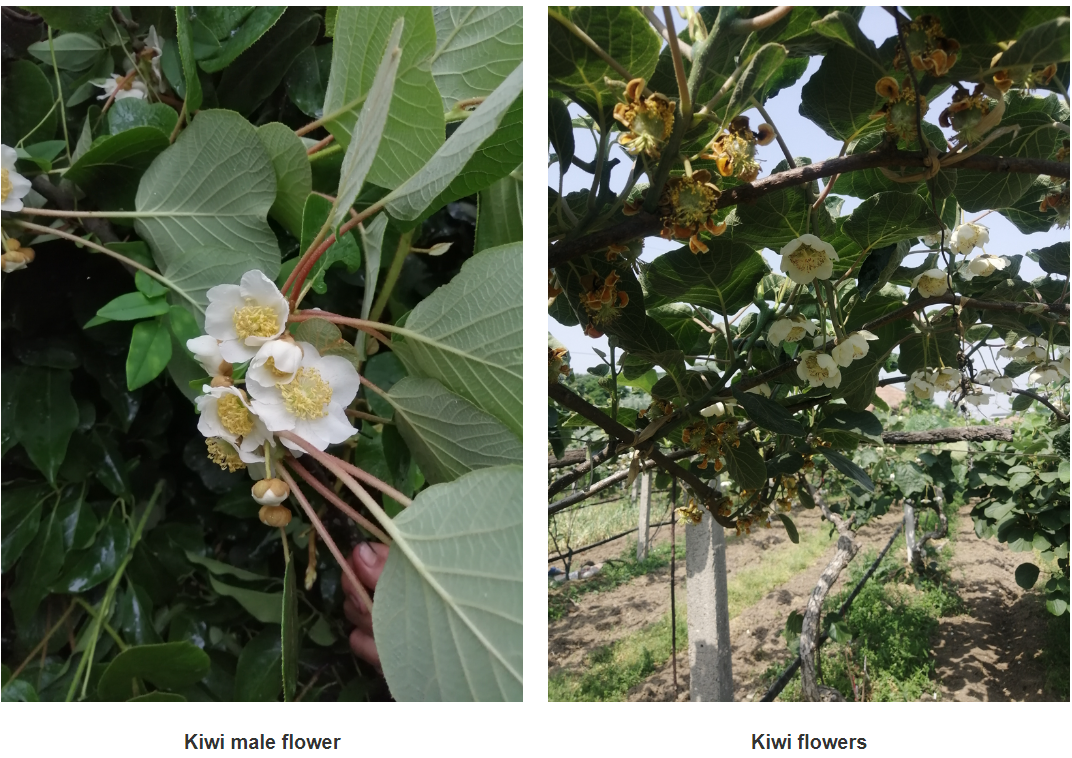Oct . 07, 2025 05:55 Back to list
Kiwifruit Male Pollen - Hebei Jiamingliang | High Germination, Optimal Pollination
Introduction to Kiwifruit Pollination
The Kiwifruit Male Pollen plays a critical role in the agricultural industry, particularly for farmers cultivating Kiwifruit trees. As a dioecious plant, kiwifruit requires cross-pollination between male and female trees to produce high-quality fruits. This article explores the features, advantages, and technical specifications of Kiwifruit Male Pollen, as well as the expertise of Hebei Jiamingliang Pollen Co., Ltd., a leading supplier in this field.

Key Features of Kiwifruit Male Pollen
The Kiwifruit Male Pollen is specifically formulated to ensure optimal pollination for female kiwifruit trees. Key features include:
- High Germination Rate: With a germination percentage of 80%, this pollen ensures effective fertilization of female flowers.
- Temperature Sensitivity: The pollen is most effective when applied within a temperature range of 15°C to 25°C. Extreme temperatures can compromise its viability.
- Storage Requirements: To maintain activity, the pollen must be stored in a dry environment. If not used within 3 days, it should be refrigerated. For longer storage, freezing at -18°C is recommended, with a 12-hour thawing period before use.
- Application Flexibility: Suitable for various kiwifruit varieties, this pollen is ideal for orchards with inconsistent flowering times.

Advantages of Using Kiwifruit Male Pollen
Utilizing Kiwifruit Male Pollen offers several benefits for farmers:
- Enhanced Yield: Proper pollination ensures that female flowers develop into high-quality fruits, significantly increasing the harvest.
- Consistent Quality: By controlling the pollination process, farmers can achieve uniform fruit size and flavor, meeting market demands.
- Adaptability: The pollen is suitable for orchards with varying environmental conditions, including differences in flowering times due to microclimates.
- Cost-Effective: Investing in premium pollen reduces the risk of crop failure, making it a cost-effective solution for long-term agricultural planning.
Technical Specifications
| Feature | Details |
|---|---|
| Pollen Source | Kiwifruit male pollen |
| Suitable Varieties | Kiwifruit female plants |
| Germination Percentage | 80% |
| Storage Conditions | Refrigerated (3 days) or frozen (-18°C) for long-term storage |
| Optimal Temperature | 15°C to 25°C |
| Application Timing | 12 hours of thawing before use after freezing |
Application Scenarios
The Kiwifruit Male Pollen is ideal for various agricultural scenarios:
- Orchard Management: Farmers with large orchards can use this pollen to ensure even pollination across different sections of the farm.
- Climate Variability: In regions with uneven flowering due to microclimates (e.g., sunny vs. shady slopes), the pollen helps bridge the gap in pollination timing.
- Weather Challenges: The pollen is effective in stable weather conditions, avoiding the need for reapplication after rain within 5 hours.
- Quality Control: By using high-quality pollen, farmers can maintain consistent fruit standards, which is crucial for export markets.
About Hebei Jiamingliang Pollen Co., Ltd.
Hebei Jiamingliang Pollen Co., Ltd. is a trusted supplier of Kiwifruit Male Pollen, with a strong commitment to agricultural innovation. The company has established six specialized kiwifruit pollen bases, ensuring a reliable supply of pollen for orchards facing shortages. Their expertise in cultivating male kiwifruit trees guarantees the quality and availability of their products. By focusing on sustainable practices, Hebei Jiamingliang Pollen Co., Ltd. supports farmers in achieving optimal yields and fruit quality.

Best Practices for Using Kiwifruit Male Pollen
To maximize the effectiveness of Kiwifruit Male Pollen, farmers should follow these guidelines:
- Storage: Keep the pollen in a dry bag before shipment. If it becomes moist, discard it immediately, as it may lose its viability.
- Application Timing: Avoid using the pollen in adverse weather conditions, such as heavy rain or extreme temperatures.
- Thawing Process: If the pollen is frozen, allow it to thaw at room temperature for 12 hours before application to ensure it returns to an active state.
- Reapplication: If rain occurs within 5 hours of pollination, reapply the pollen to maintain effectiveness.
References and Authoritative Citations
For further insights into agricultural practices and pollen storage standards, refer to the following authoritative sources:
- NIST Research on Agricultural Standards: The National Institute of Standards and Technology (NIST) provides guidelines on agricultural measurement standards, ensuring the accuracy of pollen storage and application techniques.
- Scientific Studies on Pollen Germination: Research published in NIST publications highlights the importance of temperature control in pollen viability, aligning with the recommendations for Kiwifruit Male Pollen use.
These references underscore the importance of adhering to best practices for pollen storage and application, ensuring optimal results for farmers.
-
Comprehensive Guide to CE Certification Apricot Pollen Health Benefits
NewsNov.24,2025
-
CE Certification Mango Fruit Protection Bags: Enhancing Export Quality & Sustainability
NewsNov.23,2025
-
CE Certification Varieties Suitable for Collecting Apple Pollen – Ensuring Quality & Compliance in Apple Breeding
NewsNov.22,2025
-
Comprehensive Guide to CE Certification Mango Cover Bags – Quality, Standards & Trends
NewsNov.22,2025
-
What You Need to Know About CE Certification Peach Blossom Powder Keto
NewsNov.21,2025
-
CE Certification Pear Pollen Collection Base – Ensuring Quality & Sustainability in Global Horticulture
NewsNov.20,2025